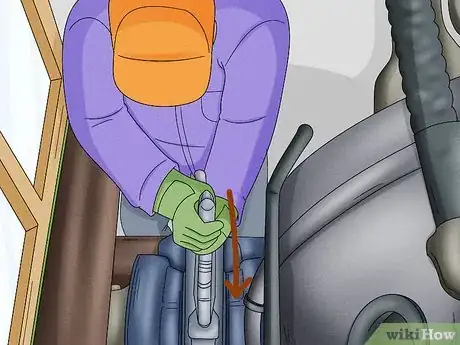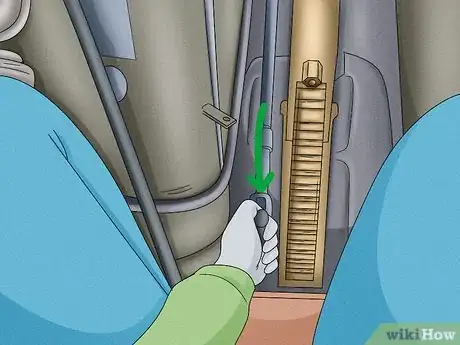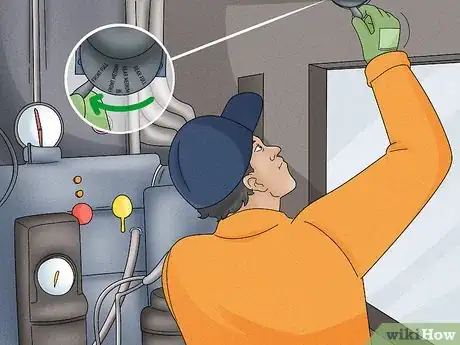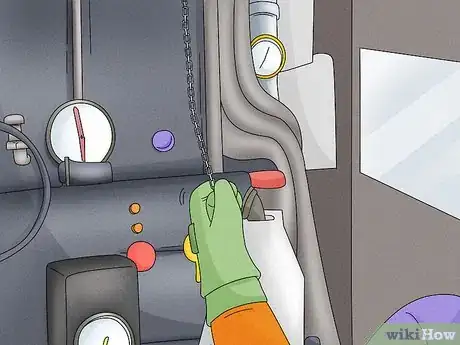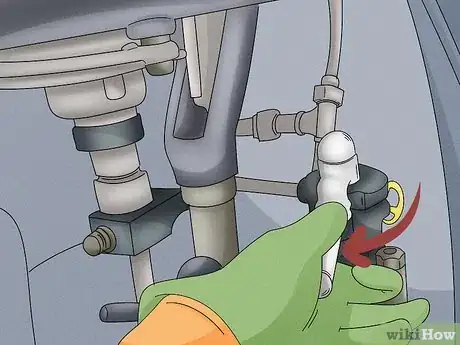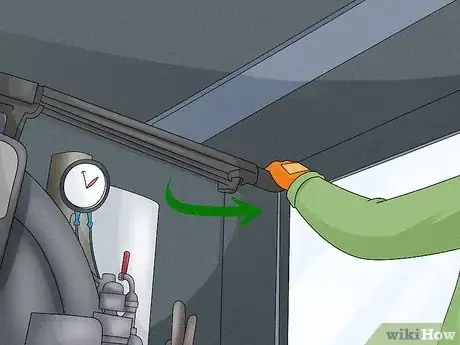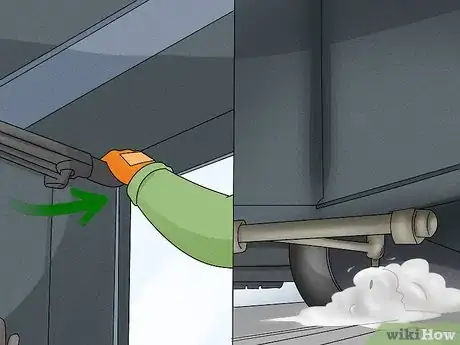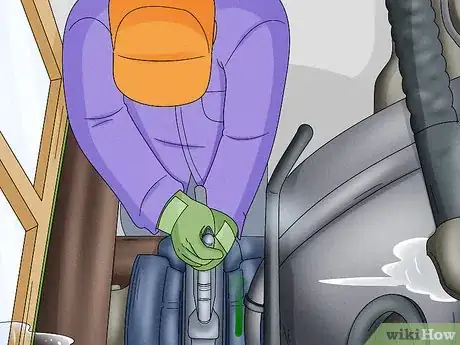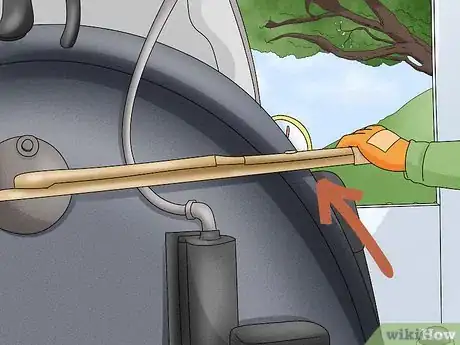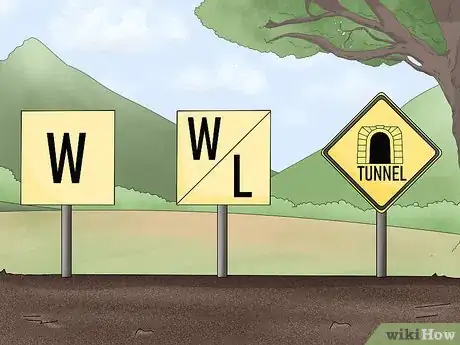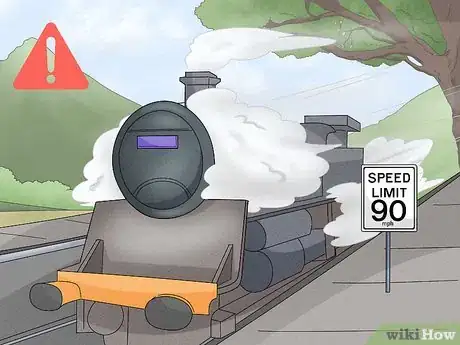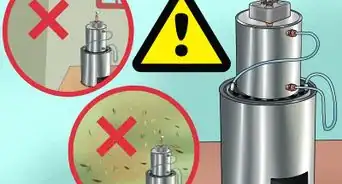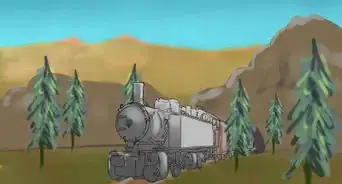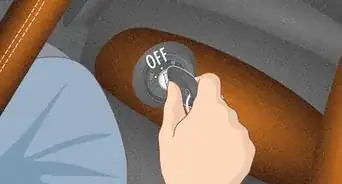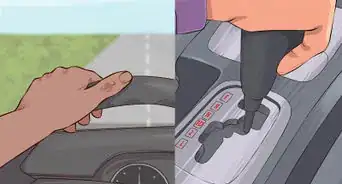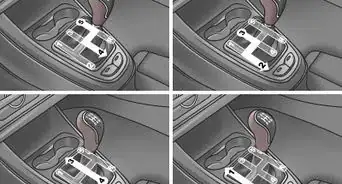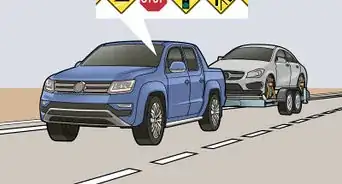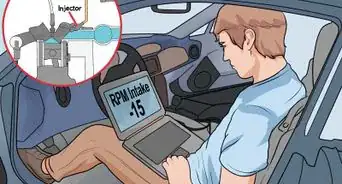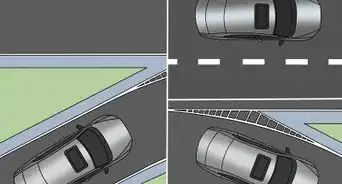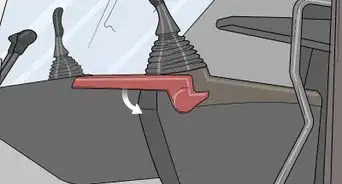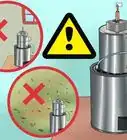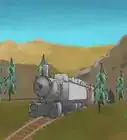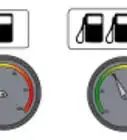wikiHow is a “wiki,” similar to Wikipedia, which means that many of our articles are co-written by multiple authors. To create this article, 24 people, some anonymous, worked to edit and improve it over time.
This article has been viewed 113,012 times.
Learn more...
Driving a steam locomotive requires years of practice and apprenticeship, along with knowledge of the route. For those who might sit in the engineer's seat of a museum steam engine, and wonder what they actually did to run it, here's what you'd have had to do. In fact, sometimes you can still try this for fun on an engine simulator in railroad/railway museums. Grab the whistle cord and read on to get her moving and stopped when the trip is over, keeping the mighty beast on track.
Steps
-
1Push the reverser/Johnson bar forward - grip the very large lever that rises from near the floor in front or beside you, squeeze the release handle and shove it all the way forward, and let go of the release handle to lock it into place.
-
2Open the cylinder cocks - find a medium size valve in front of you on the boiler, or a thin lever on the floor in front of you. Turn the valve all the way clockwise, or pull the lever back.Advertisement
-
3Turn the front headlight on - above you on the ceiling, there will be a large, flat, half-round box or on the side of the cab wall . Slide the knob on the round side of the box all the way to front.
-
4Blow the whistle code for forward movement - there will be either a cable, cables or whistle handles, above your head or in front of you on the boiler. Quickly pull down on the cable (or push the lever) twice in quick succession to make the steam whistle sound out two short blasts.
-
5Release the engine brakes - two brass horizontal levers will be near your left hand. The top one must be moved from right to left to release the brakes on the engine.
-
6Open the throttle to start the engine moving - the very long lever close to your face and hanging from the cab roof is the throttle. Grip it firmly and give it a yank towards you. As you feel the engine move slightly, shove it back in most of the way, so that it does not gather speed too fast.
-
7Gradually open throttle as the locomotive approaches track speed. Observe cylinder cock exhaust and close them when only steam is emitted.
-
8Move the Johnson bar slowly back toward vertical, but never too close to vertical. This is like the gear shift of your car and admits less steam per cylinder stroke. In turn, this increases the efficiency of steam usage so you don't over work the fireman throwing coal into the fire (and to conserve fuel and water!)
-
9If the locomotive's wheels slip, close throttle most of the way immediately. Allowing the wheels to slip will not render any tractive effort and will damage the locomotive's driving (powered) wheels if done continuously (also "tears" holes in a coal fired locomotive, or in an oil burning locomotive, can cause hollow booms much like an explosion). Wheelslip, as it's called, may cause excess damage if allowed for too long. This includes damage to the firebox itself, which may or may not result in the locomotive exploding.
-
10Blow the whistle at level crossings and before entering tunnels. If you see a whistle post sign, give the whistle a long blast and start ringing the bell. Then give another long blast. Wait a few seconds, and give a shorter blast. Once the train is nearly in the crossing, blow the whistle continuously until the locomotive has entered the crossing.
- This is the same whistling pattern required when entering tunnels or other locations where railroad employees may be working
-
11Do not exceed the speed limit. That is very dangerous, as derailments due to excess speed may occur, even on straight track. This too can cause boiler explosions. See the Wreck of the Old 97 for example.
Community Q&A
-
QuestionWhat is the Wreck of the Old 97?
 Mzm555Top AnswererThe Wreck of the Old 97 was a rail disaster in 1903, caused by excessive speed, it resulted in the train being catastrophically derailed off a bridge which killed 11 and injured 7.
Mzm555Top AnswererThe Wreck of the Old 97 was a rail disaster in 1903, caused by excessive speed, it resulted in the train being catastrophically derailed off a bridge which killed 11 and injured 7. -
QuestionWhat happens if there's a car on a railroad track?
 Community AnswerThat all depends on when the operator is informed, or sees said car. Trains can take up to a mile to stop, if the car is demolished, and less than a mile notice of said car. Given a notice within 2-3 miles of the car on the tracks, it should be able to stop. If your car stalls on a train track, leave your vehicle, and call 911.
Community AnswerThat all depends on when the operator is informed, or sees said car. Trains can take up to a mile to stop, if the car is demolished, and less than a mile notice of said car. Given a notice within 2-3 miles of the car on the tracks, it should be able to stop. If your car stalls on a train track, leave your vehicle, and call 911. -
QuestionDoes the engineer drive the train from the caboose at the back of the train?
 Community AnswerNo, the engineer is in the very first car, the locomotive. If there is another in the rear, to help the lead locomotive, there is probably another engineer there. They, however, would not be driving, only maintaining the amount of force required by the extra power needed to move the train forward.
Community AnswerNo, the engineer is in the very first car, the locomotive. If there is another in the rear, to help the lead locomotive, there is probably another engineer there. They, however, would not be driving, only maintaining the amount of force required by the extra power needed to move the train forward.
Warnings
- Severe injury, death and litigation may result in attempting to operate an actual steam locomotive without certification. It is a violation of federal law to operate a locomotive without proper certification on public tracks, and probably can be considered a large theft of property, and trespassing. Please use these instructions for your imagination, or train simulators.⧼thumbs_response⧽
